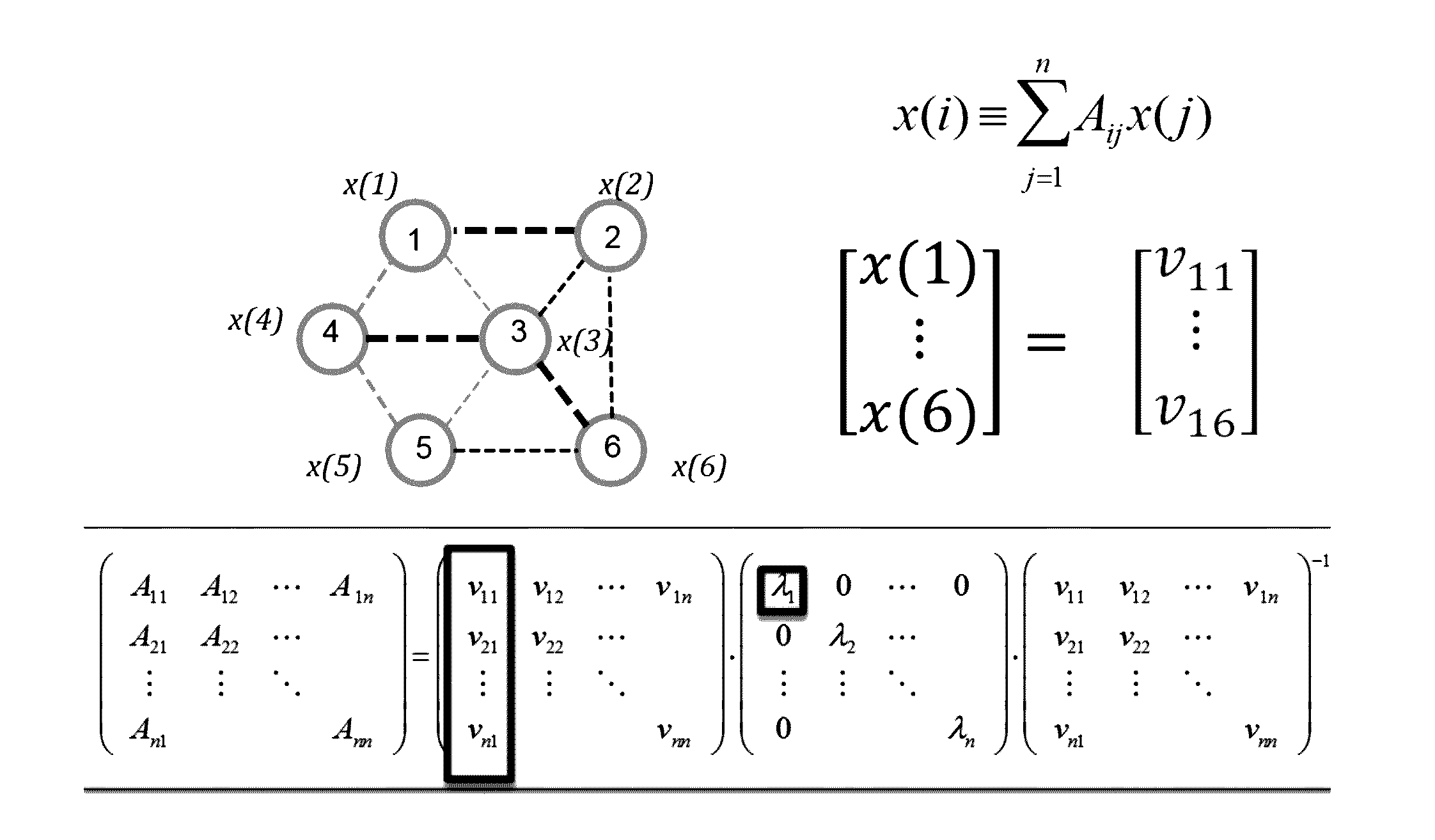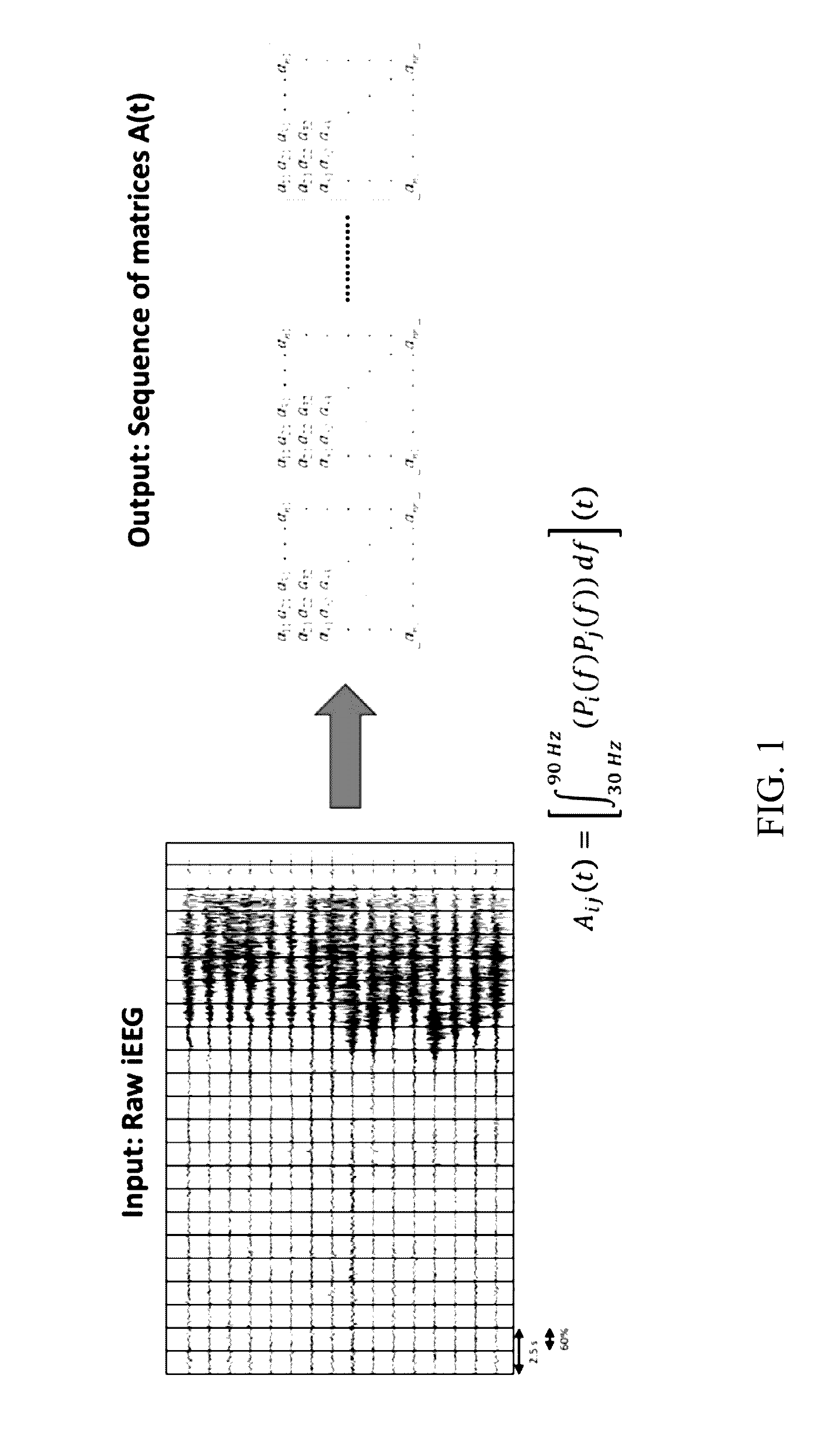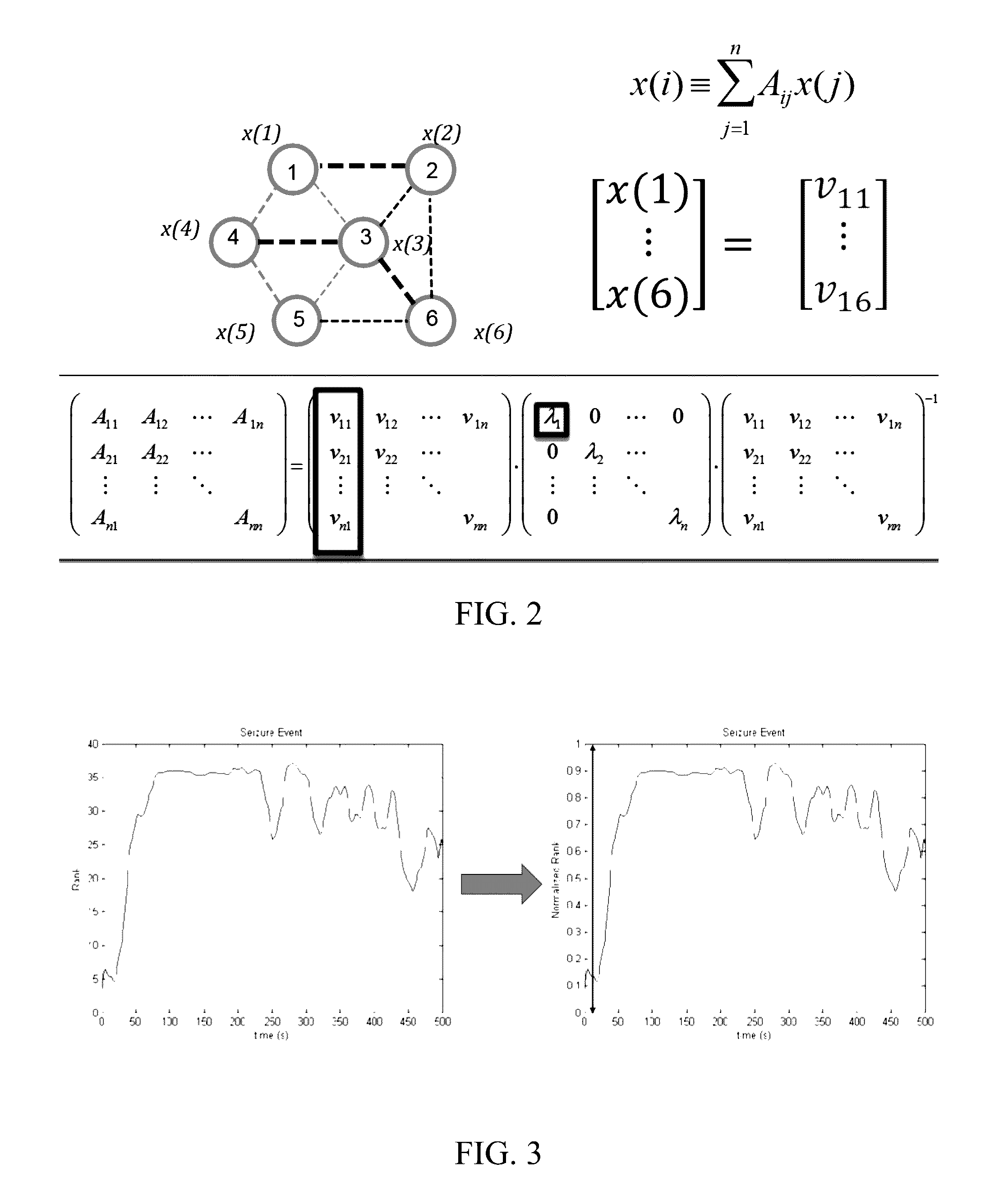Computational tool for pre-surgical evaluation of patients with medically refractory epilepsy
- Summary
- Abstract
- Description
- Claims
- Application Information
AI Technical Summary
Benefits of technology
Problems solved by technology
Method used
Image
Examples
examples
[0037]According to some embodiments of the invention, data for patients that had resective surgeries was analyzed to provide information for patience considering a resective surgery. Data was obtained for 42 patients that had resective surgeries. 20 patients were implanted with SDE and 22 with SEEG. EEG data on 1-3 seizures was analyzed by according to the methods described herein without knowledge of the surgical outcomes. In 40 out of 42 situations, we were able to predict successful surgical outcomes due to overlap between EZTrack's heatmaps and the actual area of resection. Compellingly, in all 17 failures, we were able to predict negative surgical outcomes due to the lack of overlap between EZTrack's heatmaps and the resected areas. These findings suggest that, had clinicians used EZTrack to assist in localizing the EN in these patients, they may have either resected different regions or refrained from performing the surgeries.
[0038]Such an assistive tool would not only reduce ...
PUM
 Login to View More
Login to View More Abstract
Description
Claims
Application Information
 Login to View More
Login to View More - R&D
- Intellectual Property
- Life Sciences
- Materials
- Tech Scout
- Unparalleled Data Quality
- Higher Quality Content
- 60% Fewer Hallucinations
Browse by: Latest US Patents, China's latest patents, Technical Efficacy Thesaurus, Application Domain, Technology Topic, Popular Technical Reports.
© 2025 PatSnap. All rights reserved.Legal|Privacy policy|Modern Slavery Act Transparency Statement|Sitemap|About US| Contact US: help@patsnap.com



